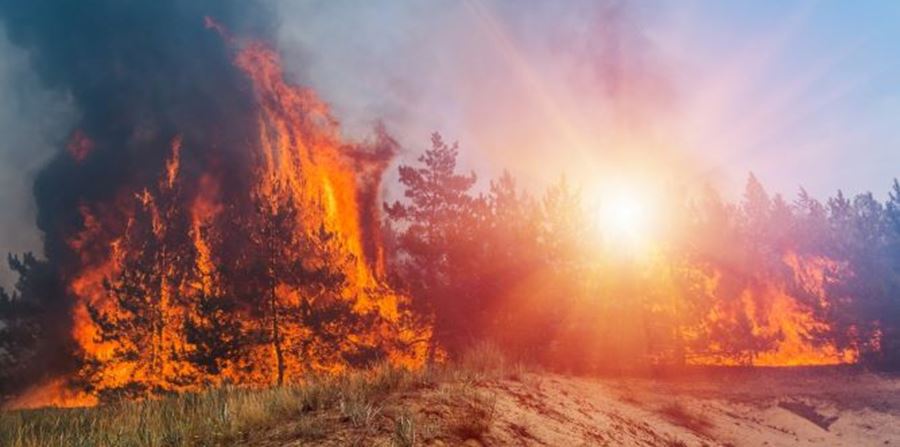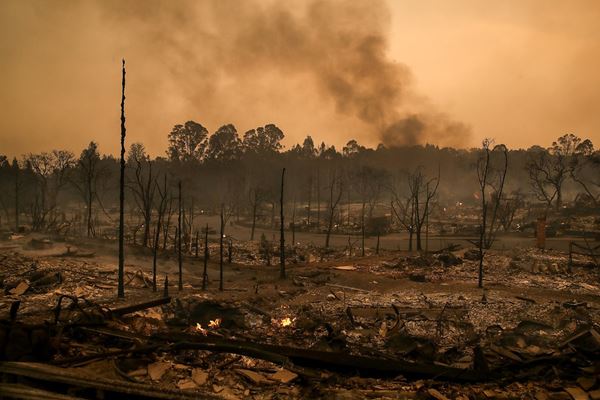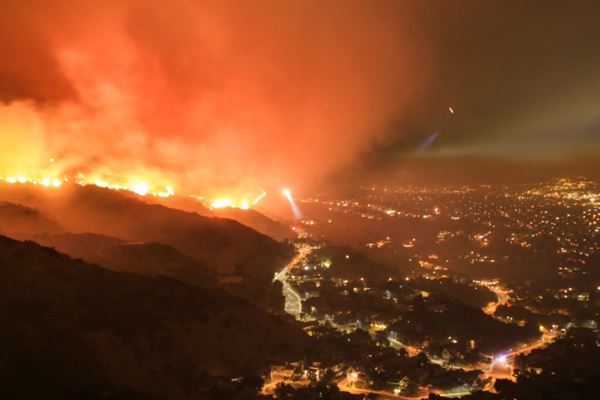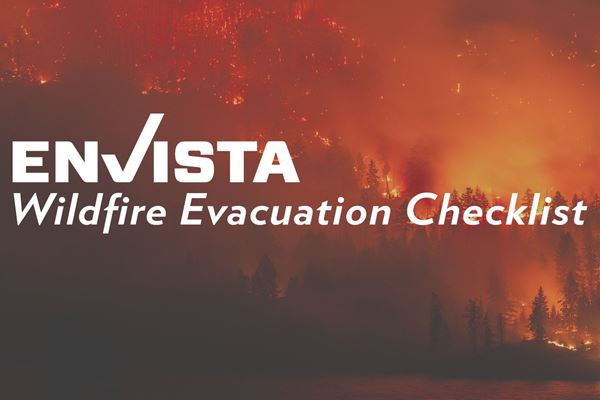Top 10 Checklist for Analyzing Complex Wildland Fires

Wildland fires, no matter where they are located, are all driven by the same factors: fuel, weather, and topography. The type of fuel (grass, brush, trees, etc.), wind direction/speed, humidity, and slope of the land will give insight into why the wildland fire is burning in a certain direction. For example, if a strong wind is blowing out of the southwest, then the wildland fire is going to primarily head toward the northeast.
Did you know wildland fires burn faster going uphill and slower downhill? Or the fact that 10,000 wildland fires are actually caused by lightning every year? The question of how it started can be tricky. On average, more than 4,400 wildland fires are started across the U.S. every year by humans, accident or not.
Property Loss in the Path of the Wildfire
Experts can help find the connection point of your insured's loss to a wildland fire. For example, one of the first things you should analyze is if the fire loss is in the direct path of the wildland fire. If things are not adding up, consider calling in a wildland origin and cause expert to confirm the fire loss is due to a large or complex wildland fire. Trust your instincts, and follow the guidelines below.
Top 10 Checklist for Analyzing Wildland Fires
- Is the fire loss inside the main body of the wildland fire? Is it on the outside perimeter of the wildland fire or just nearby? What time was the fire loss? Wildland fires are most active from early afternoon to early evening. As temperatures decrease, the humidity increases and the fire activity dies down. This is usually in the late evening and early morning.
- What was the construction of the affected building(s)? Wood shake roof? Wood siding? Metal roofs and metal siding are less likely to catch on fire. How well was the property maintained? Was there tall vegetation all around the structure?
- How close is the structure/vehicle to other structures/vehicles? Are there any prior photos of the property in the loss file? On a large wildland loss, look at the structures that did not burn. Was it due to their location, construction, or the immediate area around the structure? Is this the only structure/vehicle on the block that burned?
- Did neighbors or fire crews see anything unusual? Did the insured leave the doors and windows open when they left? Was there a lack of personal items on the property (removed before the fire), such as photographs, computers, safes, guns, vehicles, boats, RVs, etc.? When an area is told to evacuate, it is usually in minutes, not hours. Are the insured's emotional state and demeanor appropriate for the situation? Search social media for posts and photos about the wildland fire.
- Is the structure or vehicle a complete burn? Even if the structure/vehicle is a complete burn, the vegetation nearby should still have identifiable burn indicators that will show fire either going toward the structure/vehicle or moving away from the structure/vehicle (i.e. the wildland fire impacted the structure/vehicle or the fire in the structure/vehicle impacted the wildland fire).
- Speak with local fire/police. Did the fire department start a back burn to fight the main body of the wildland fire (i.e. igniting vegetation between the fire and an anchor point such as a road, handline, river, etc. to remove vegetation in the path of the wildland fire)? Did the back burn damage the structure or did the wildland fire?
- Are there any local rules or laws dealing with vegetation mitigation or building construction type for that area? Check with local planning, building departments, and HOAs.
- Take a quick look at financials. Are they current on payments? Was the structure/vehicle for sale? Was the property vacant or occupied? Any policy increases? Previous fires or losses? Recent changes or modifications to the structure/vehicle? Recent hardships (medical, financial, divorce, etc.)?
- Check the local weather data for the loss location during the wildland fire. Wildland fires give off burning embers that can be carried a great distance by the wind and start additional fires in front of the main fire. Old wood shake roofs, stacks of firewood, and dry vegetation around structures are vulnerable to these embers. Spot fires (not connected to the main wildland fire) in front (the head of the fire) of the main wildland fire can be expected; however, a spot fire along the sides (flank) or rear (heel) is not common. Is it really a spot fire or a totally separate fire caused by something other than the wildland fire? The burning embers will travel in the same direction as the wind, spot fires will be downwind of the main wildland fire.
- Has the cause of the wildland fire been identified? Was it due to a human act or a natural cause such as lightning? Is someone liable for the wildland fire? Consider a lightning strike map of the area.
Download the Whitepaper
Our experts are ready to help.



